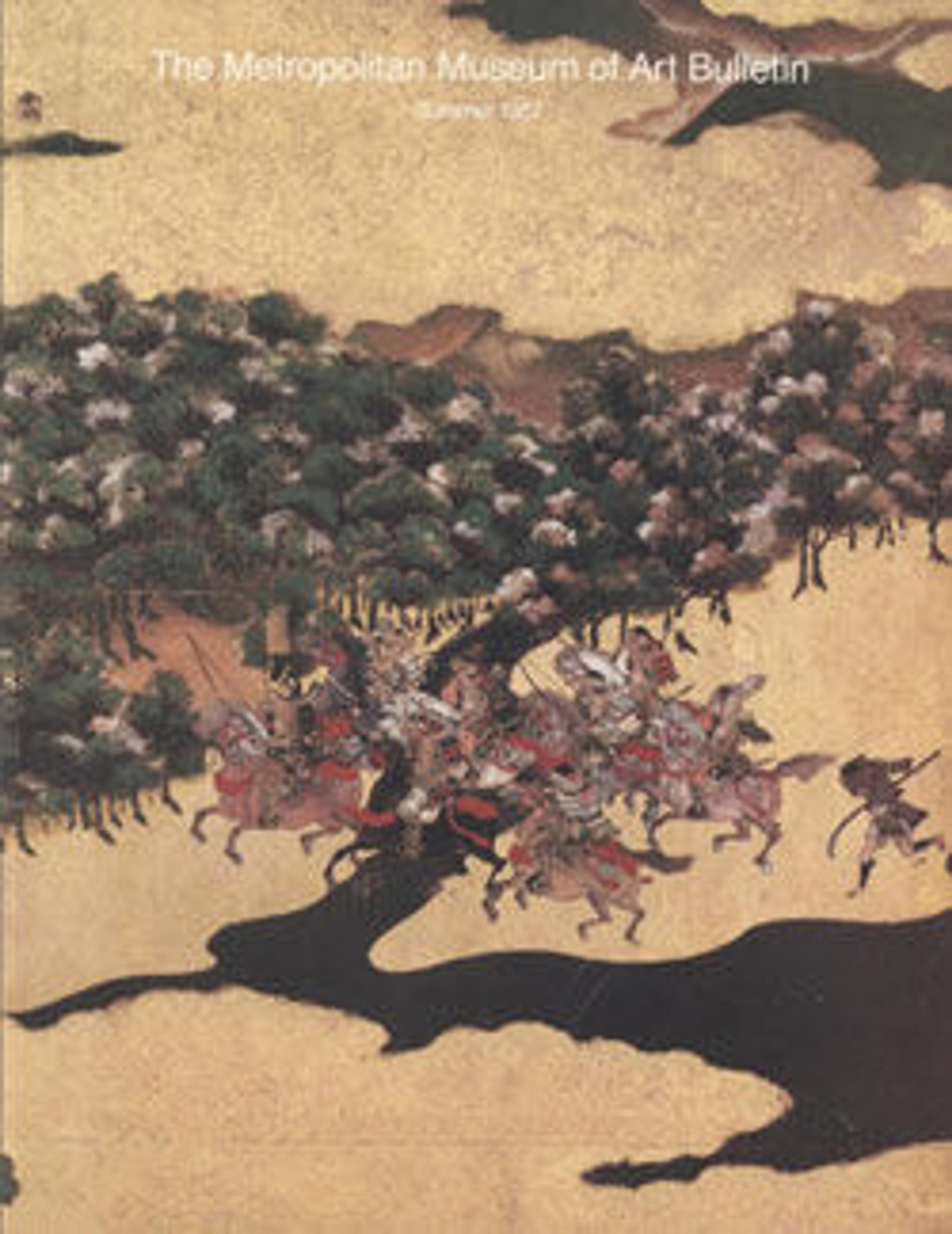Carriage-wheel stone bracelet (sharinseki)
This irregular disk with smooth radial fluting is a fine example of a type of carved stone object found in the keyhole-shaped burial mounds of central Japan from the fourth and fifth centuries. Works in this shape are called sharinseki (carriage-wheel stones) and are sometimes identified as stone bracelets. They seem, however, to be talismans with magical or religious significance. They do not appear in burials of the later Kofun period; perhaps their special meaning faded with the influx of Chinese and subsequently Buddhist culture that began in the sixth century.
Artwork Details
- Title: Carriage-wheel stone bracelet (sharinseki)
- Period: Kofun period (ca. 300–710)
- Date: 4th century
- Culture: Japan
- Medium: Carved green tuff
- Dimensions: H. 8 1/2 in. (21.6 cm); W. 7 5/8 in. (19.4 cm); D. 1 1/8 in. (2.9 cm)
- Classification: Stone
- Credit Line: The Harry G. C. Packard Collection of Asian Art, Gift of Harry G. C. Packard, and Purchase, Fletcher, Rogers, Harris Brisbane Dick, and Louis V. Bell Funds, Joseph Pulitzer Bequest, and The Annenberg Fund Inc. Gift, 1975
- Object Number: 1975.268.388
- Curatorial Department: Asian Art
More Artwork
Research Resources
The Met provides unparalleled resources for research and welcomes an international community of students and scholars. The Met's Open Access API is where creators and researchers can connect to the The Met collection. Open Access data and public domain images are available for unrestricted commercial and noncommercial use without permission or fee.
To request images under copyright and other restrictions, please use this Image Request form.
Feedback
We continue to research and examine historical and cultural context for objects in The Met collection. If you have comments or questions about this object record, please contact us using the form below. The Museum looks forward to receiving your comments.
